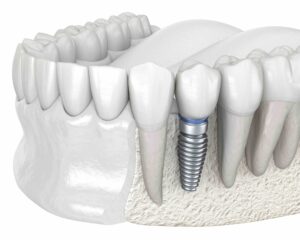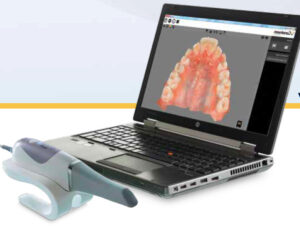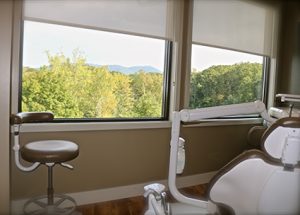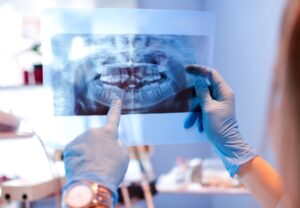Header logo
header top contact widget
Periodontitis
If Your Mouth Is Frequently Dry, You Have Higher Risk For Gum Disease
Posted on Dec 02, 2020 by William J. Claiborne, DDS MS
Our bodies are home to trillions of micro-organisms. This includes micro ‘ponds’ of viruses, fungi, and bacteria. As we’ve learned over the years, some of this bacteria is highly beneficial to how our systems operate.
Although the thoughts of bacteria often conjure up images of infectious organisms, the mouth is home to some very “good” bacteria. For bacteria that are present under normal circumstances, they do not cause disease and actually have a purpose. It’s the “bad” bacteria I want to focus on for now.
Oral bacteria is the source of nearly every problem that develops in the mouth. The oral cavity (mouth) is structured to manage a certain level of bacteria. As the entry point of most of the bacteria we add to our bodies, it can process a “normal” amount on a day-to-day basis. It is the overload of bacteria that becomes the origination source of problems.
The reason people are advised to brush at least twice a day and floss daily is to remove accumulated oral bacteria from the mouth. When not removed on a regular basis, a sticky film of bacteria form that coats the teeth and gums. This film is known as plaque. Without sufficient and frequent removal of plaque, it begins to harden at the base of teeth.
This is tartar (or calculus), which is actually a cement-hard mass of oral bacteria. Tartar cannot be brushed or flossed away; it requires removal by a dental professional. During your dental cleanings, you probably notice when your hygienist is scraping away at teeth. It is tartar that she is trying to remove.
Your periodic dental cleanings are important. If tartar is allowed to further amass, the bacteria can become inflamed, attacking gum tissues. As bacteria continue to reproduce, they create an inflammation that extends beneath the gum line. The infection they trigger can reach down into the structures that support natural teeth, including tooth roots, tissues, ligaments and bone.
Periodontal disease is the leading cause of adult tooth loss. The advanced stage of gum disease, known as periodontitis, creates a bacteria so potent that research has linked it to serious diseases elsewhere in the body. These include some cancers, heart disease, stroke, Alzheimer’s disease, diabetes, arthritis, preterm babies, and impotency.
Saliva is the mouth’s natural rinse that helps cleanse oral bacteria from the mouth. This keeps bacteria levels to a minimum and lowers their ability to cause problems. When saliva flow is depleted, however, bacteria remain in the mouth longer – and multiply rapidly.
Saliva helps to continually cleanse your mouth, removing particles that can rot and cause bad odors. A condition called “dry mouth” (known as Xerostomia) is when production of saliva is decreased.
When the “dry mouth” condition is continual, the problem may be due to low salivary gland production or some diseases. Dry mouth naturally occurs during sleep and in people who breathe through their mouth. However, as a periodontal specialist, I find that most cases are due to factors that can be easily controlled with simple changes.
To support saliva flow and reduce “bad” bacteria in the mouth, twice daily brushing and flossing help. However, knowing contributors to a dry mouth can help you better manage or control oral bacteria levels. These include:
The aging process – Aging causes the skin, cartilage, and tissues to become less supple, drier. We can’t stop the aging process but can help protect our oral health by drinking plenty of water throughout the day. Coffee, tea and colas don’t count. Also, consider using an oral rinse designed to replenish moisture in the mouth.
Medications – Many over-the-counter and prescribed medications today have a side effect of oral dryness. Some of the worst culprits are antihistamines, depression and incontinence medications, and some that control blood pressure. If you take one of these, ask your doctor about options that may be less drying to the mouth. Or, increase your water intake and use a daily rinse to replenish oral moisture.
Sleep habits – To dry something out, a flow of air is just the thing. This also applies to the mouth. Snoring or breathing through the mouth during sleep create added dryness to oral tissues. Talk to your doctor about ways to resolve these problems. It may be as easy as adjusting your sleeping position or adding a side pillow.
Medical conditions – Having acid reflux, sinus infections, diabetes and bronchitis can cause dry mouth. A bad cold can also force people to breathe more through their mouth. For these conditions, be especially committed to your oral hygiene routine at home (brushing and flossing) and up your water intake.
Caffeinated beverages – Caffeine has a drying effect on oral tissues and therefore depletes the helpful rinsing benefits of saliva. Most colas contain caffeine, which is drying to oral tissues. Add to that the high acidity level in colas (also harmful to tooth enamel). Also drying are coffee and tea. Like colas, these drinks contain acid added to caffeine. If you drink these beverages, be sure to rinse your mouth after or alternate with gulps of water.
Alcohol (including beer and wine) – Mixed drinks, wine and beer are all drying to oral tissues. Add the acidity and sugar levels that exist in wine or mixers and these drinks pack a double-whammy to oral tissues. Again, swish with water between drinks or have a glass of water nearby to dilute the impact of these.
Smoking (cigarettes, cigars, vaping) – People who have smoked for years often have dry skin that ages their appearance far beyond their actual years. The same is occurring inside the mouth. Cigarette and cigar smoke is laden with toxic chemicals, which is true for e-cigs as well. Just be aware at your added risk and the drying effects and take added measures to keep your mouth clean and moist.
If you have delayed or avoided dental care, call 828-274-9440 to request a consultation, or begin with a thorough examination in our Asheville periodontal office. We offer the latest techniques, technology, and skills while always making patient comfort a top priority.
Amazing Dentistry In Our Asheville Periodontal Dental Office
Posted on Oct 06, 2020 by William J. Claiborne, DDS MS
A periodontist, for most individuals, isn’t a doctor that is a regular part of their dental care. We are often a “behind the scenes” specialist, working with general dentists and perhaps other dental specialists.
Like a cardiologist or a urologist, however, you’ll hopefully never need us. If you do, you may be surprised at our Asheville periodontal dental office’s advanced and multi-faceted features.
To define our role, a periodontist is a dentist who specializes in the prevention, diagnosis, and treatment of periodontal disease, and in the placement of dental implants.

Periodontists receive extensive training, including three additional years of education beyond dental school. They are able to treat more problematic periodontal cases, such as people with severe gum disease or those having a complex medical history.
In addition, a periodontal specialist is trained in performing cosmetic procedures that involve gum tissues, such as correcting a “gummy smile”.
It is a busy specialty. It is estimated that over 47 percent of American adults have some level of periodontal disease (also known as “gum disease”). Because this disease can begin without obvious warning signs, many are unaware of its presence.
Gum disease begins with gingivitis, with some symptoms that may be easily ignored. However, when symptoms involve discomfort, the disease can be approaching more advanced levels.
This is why it is important to be familiar with the signs and symptoms, which include:
• Red, swollen or tender gums or other pain in your mouth
• Bleeding while brushing, flossing, or when eating certain foods
• Gums that are receding (pulling away from the teeth) or make the appear teeth longer than normal
• Loose or separating teeth
• Pus between your gums and teeth
• Sores in your mouth
• Persistent bad breath
• A change in the way your teeth fit together when you bite
• A change in the fit of partial dentures
If you notice any of these symptoms, be sure to contact your dentist or periodontist without delay. Gum disease will only worsen without treatment. It is the nation’s leading cause of adult tooth loss.
For specialized needs, we offer an advanced care environment where patients are comfortable and experience a restoration of their smiles with the support of advanced technology. These features include:
• LANAP Protocol Using PerioLase MVP-7 – Efficiently and effectively treats periodontitis (advanced gum disease) with laser technology. It causes very little discomfort and has a quick recovery time. This has also been found to stimulate bone regrowth in damaged areas.
• Dental Radiology With 3-D Cone Beam Technology – This imaging is ideal for diagnosis and treatment planning. The imaging covers the entire dentition area with clear views of the mandible and maxilla (upper and lower jaw).
• CareStream Cone Beam Computer Tomography Imaging – This computerized tomography provides imaging in exceptional detail and range.
• CS 3600 intraoral scanner – Patients no longer have to endure having impressions made with bulky, glopy trays held in their mouths! This quickly and comfortably scans the mouth’s interior for digital impressions using a small, handheld scanner. It can also reach difficult–to–access areas in the patient’s mouth with improved patient comfort.
• Simplant Dental Software for Computerized Dental Implant Placement – This system helps in pre-surgical positioning of dental implants on the computer, using a 3D model of the patient’s jaw. This aids in the selection of the implant type that ensures a precision fit.
• Intraoral Camera Technology – This provides outstanding quality of images within the mouth. These images are sent to screen for a clear, crisp view so we can confer with patients on specific treatment issues.
• Computer Imaging In Treatment Suites – Treatment suites are equipped with computers for convenient image sharing with patients.
• Advanced Sterilization – Our custom sterilization unit adheres to (or exceeds) CDC guidelines for instrument processing protocols, particularly in the cleaning of instruments.
• Fully-Equipped Surgical Suites – Relax during treatment while surrounded by beautiful mountain views of Asheville.
 Periodontal (gum) disease is the result of an accumulation of oral bacteria and the leading cause of adult tooth loss. Have you avoided seeing a dentist for years? You are not alone. An estimated 70 percent of adults admit to having some level of anxiety or fear associated with dental care.
Periodontal (gum) disease is the result of an accumulation of oral bacteria and the leading cause of adult tooth loss. Have you avoided seeing a dentist for years? You are not alone. An estimated 70 percent of adults admit to having some level of anxiety or fear associated with dental care.
Our office is structured to attend to your specific needs, gently and respectfully. We offer a private consultation room to discuss treatment in a comfortable setting versus communicating with patients while they are seated in a treatment chair.
For patients who desire a “sleep” state, we offer oral sedation as well as I.V. sedation (twilight sleep). Oral sedation is a pill that helps patients relax. It also has an amnesiac effect, leaving most with little or no memory of treatment afterward.
I.V. sedation places the patient in a deeper sedative state (twilight sleep), also erasing memory of the procedure. It is administered by a doctor of anesthesiology for optimal comfort and safety.
With both, patients are monitored with advanced safety equipment throughout treatment.
Patients also find our entire staff to be a unified team, each bringing a sincere level of compassion and commitment to excellent care.
For people in need of gum recontouring, a periodontist is THE expert in the shaping of oral gum tissues. Here, Dr. Jennifer Boyland and I have advanced training to create gum tissue contours with a natural appearance. We are also able to ensure healthy seals around teeth to protect the structures beneath the gums from bacteria penetration.
Our specialty is ideal for those who have a “gummy smile.” This is when too much gum tissue shows above upper teeth most visible in a full smile. While this trait does not interfere with the ability to have and maintain a healthy smile, for many, it causes them to ‘hold back’ rather than smile fully. Some people cover their smiles with a hand or try to smile with lips only.
Gum re-contouring is also done in crown lengthening procedures. This evens out the amount of gum tissues that arch teeth for a beautiful, balanced smile line.
Having healthy gums is so important. As research continually shows, gum health is intricately connected to overall health. Oral bacteria of periodontal disease has been linked as a trigger for serious diseases, including heart disease, some cancers, stroke, memory loss, diabetes, and arthritis.
If you are experiencing any of the symptoms associated with periodontal disease, a referral is not required. Call 828-274-9440 and we will be happy to assist you.
Smoking, Vaping Lead To Gum Disease, Tooth Loss.
Posted on Sep 15, 2020 by William J. Claiborne, DDS MS
With all good intentions, adults occasionally trade one bad habit for another. For instance, a commitment to exercise more often for weight loss can easily backfire when justifying a thick smoothie as a daily reward.
This is what worries me about Vaping. Vaping, the use of e-cigarettes, hit the market around 2007. It is designed to deliver nicotine through a vapor. Although the vapor is generally not labeled as harmful (it’s not “safe”, either), its nicotine is no less harmful to the user as that delivered via cigarette smoke.
Unfortunately, many cigarette users switched to vaping based on the perception that “e-cigs” were a safer alternative. For those who wanted to wean themselves off of cigarettes through this switch, very few achieve that goal as a result.
A 2018 report by the National Academy of Sciences, Engineering, and Medicine concluded there was “evidence that e-cigarette use increases the frequency and intensity of cigarette smoking in the future.”
Teens have been most susceptible to the hazards of vaping. It is the most commonly used tobacco product among U.S. youth. E-cigarette use among middle and high school students increased 900 percent during 2011-2015. According to the Surgeon General, 1 in 5 high school students and 1 in 20 middle school students were using e-cigarettes in 2018.
Unfortunately, nicotine exposure can harm the brain as it develops, until about age 25. During adolescence, nicotine use can affect learning, memory and attention span as well as increase their risk for future drug addictions. (https://e-cigarettes.surgeongeneral.gov/documents/surgeon-generals-advisory-on-e-cigarette-use-among-youth-2018.pdf)
As a periodontist in Asheville, NC, my concern when it comes to oral health is what many cigarette smokers and vapers don’t realize when it comes to high risks to their smiles.
In our periodontal dental office, I’ve seen how significantly the habit of cigarette smoking can have on one’s smile. It’s no secret that smoking cigarettes can stain teeth and cause bad breath. However, nicotine in any form is a hazardous force in the mouth.
According to the American Dental Association (ADA), smoking can cause the gums to recede from teeth, exposing vulnerable tooth root sections. This enables easier entry of oral bacteria into the structures that support tooth roots. Smoking can also delay healing following periodontal therapy, extractions or implant placement. The longer it takes oral tissues to heal, the greater the risks for infection to develop.
Additionally, smoking increases the risks of oral cancer, lesions inside the mouth, periodontal (gum) disease, enamel erosion and tooth loss. It greatly reduces saliva flow in the mouth, which is a tremendous aid in removing bacteria and food particles from the mouth, helping to control bacteria levels. The condition of “dry mouth” also causes bad breath.
Because of the vape’s moist presence in the mouth, the assumption with vaping over smoking cigarettes is the “benefit” of oral dryness. However, this is easily dispelled when looking at the true facts.
While there are more than 7,000 chemicals found in the smoke of tobacco products, (including nicotine, tar, carbon monoxide, acetaldehyde and N-nitrosamines), nicotine is the primary addicting component. A study of some e-cigarette products found the vapor contains known carcinogens and toxic chemicals, as well as potentially toxic metal particles from the device itself.
The e-liquids delivered by these devices typically contain nicotine, propylene or polyethylene glycol, glycerin, and additives. Sound safe? Not at all.
According to the Centers for Disease Control & Prevention (CDC), a smoker has twice the risk for gum disease compared with that of a nonsmoker. (https://www.cdc.gov/tobacco/campaign/tips/diseases/periodontal-gum-disease.html)
When a patient is diagnosed with advanced periodontal disease (periodontitis), they must make a commitment of time and expense to rid this inflammatory disease from their mouths. For those who ignore its presence or assume it will get better on its own, the disease will simply progress further.
Gum disease begins with sore gums that may bleed while brushing teeth. Or, it may cause no noticeable symptoms at all in early stages.
As it worsens, gum disease will cause frequent bad breath, tender gums that turn red, gum recession, and gums that bleed easily when brushing. Pus pockets may form on the gums. As it attacks the structures beneath the gum line, teeth may loosen or shift.
As the nation’s leading cause of adult tooth loss, it brings the hard decisions (and expense) for replacement. After all, you need teeth for eating and speaking. Do you go with dental implants? Or, do you take on the challenges that come with dentures and partials? As hard as the decisions of replacing teeth can be, gum disease can bring even more devastation with it.
Research has linked the bacteria of gum disease to serious health problems. These include heart disease, stroke, preterm babies, arthritis, diabetes, impotency, some cancers and even Alzheimer’s disease. These connections occur through the infectious bacteria of gum disease entering the bloodstream through tears in diseased gum tissues.
Once in the bloodstream, the bacteria can travel throughout the body and create inflammatory reactions. This “systemic inflammation” is able to trigger the onset of some diseases and conditions or even further the development of others.
Certainly, we all have the right to determine what is in our best interest as far as our own health goes. However, I believe that many individuals end up in our office with serious gum problems and facing tooth loss because of what they did not know. Having factual information allows us to make wise decisions for our health and well-being.
As a periodontist, I have advanced skills in the treatment of all stages of periodontal (gum) disease. My dental specialty also includes the diagnosis and placement of dental implants. Here, our patients can relax under Oral or IV sedation (“twilight sleep”) while having their smiles restored. We also create a customized care program that allows each person to maintain good oral health once their treatment is complete.
 If you smoke or vape, don’t assume “that won’t happen to me.” The reason we wear seat belts in cars is because there are great risks when we do not. The risks for losing your teeth and having potent bacteria running rampant through your system is something you can take easy measures to prevent.
If you smoke or vape, don’t assume “that won’t happen to me.” The reason we wear seat belts in cars is because there are great risks when we do not. The risks for losing your teeth and having potent bacteria running rampant through your system is something you can take easy measures to prevent.
Experiencing symptoms associated with gum disease? We urge you to schedule an examination appointment as soon as possible. Call our beautiful, comfortable Asheville office at 828-274-9440. A referral is not necessary.
“Futuristic” Technology Surrounds Patient Care
Posted on Jul 30, 2020 by William J. Claiborne, DDS MS
Many adults are unfamiliar with the specialized skills of a periodontist – until they need one.
At Biltmore Periodontics in Asheville, most patients are referred by their general dentist or other dental specialist. However, a professional referral is not required. We accept patients from the recommendations of other patients as well as those who find us through internet searches, etc.
To clarify what we are and what we offer, a periodontist is a dentist who extends his or her education and skills further (typically 3 years past completing dental school) to specialize in the prevention, diagnosis, and treatment of periodontal disease and other gum conditions.
Additionally, a periodontal specialist has advanced skills in the diagnosis and placement of dental implants. A periodontal specialist is also trained in performing esthetic procedures that involve gum tissues, such as crown lengthening and correcting a “gummy smile”.
A periodontist’s office may have a similar look and feel of your general dentist’s office. However, the advanced skills and techniques are typically supported by advanced technology. Some offices, as ours (serving Western North Carolina) provide a rather “futuristic” array of technology to enhance treatment outcomes, save the patient time in treatment, speed healing time, and optimize comfort throughout care.
Periodontists are able treat complex periodontal cases of severe gum disease or caring for patients who have complex medical histories or health issues. They offer a wide range of treatments using a range of surgical or non-surgical procedures.
A periodontal office is also attuned to caring for high-fear patients. Periodontists understand that many people who develop periodontal (gum) disease do so because they were too afraid of dental treatment to see a dentist on a regular basis. Without a solid combination of thorough at-home oral hygiene and regular dental check-ups and cleanings, the potential to develop gum disease greatly increases.
In a recent report by the Centers for Disease Control & Prevention (CDC) on data related to prevalence of periodontitis in the U.S.: 47.2 percent of adults 30 years and older have some form of periodontal disease. Periodontal disease rates increase with age, affecting 70.1 percent for adults 65 years and older.
One study, published by StudyFinds.org, shares recent findings of 2,000 adults in the U.S. regarding dental visits. Results show a whopping 62 percent of those surveyed stating they were too afraid to even visit a dentist’s office. (https://www.studyfinds.org/adults-too-scared-visit-dentist-teeth/)
Surprisingly, the age group most likely to avoid dental care because of fear were millennials (currently ages 22 – 38). With past decades of advancements in comfort and greater sensitivity surrounding anxiety and fear in the dental office (versus what older generations often experienced), their higher levels of avoidance due to fear was unexpected, but clearly significant.
In our Asheville periodontal dental office, we provide special measures to ensure the safety and comfort of all patients – for every appointment. For many patients, Dr. Claiborne and Dr. Boyland offer Oral and I.V. Sedation. Sometimes referred to as “twilight sleep,” I.V. Sedation allows patients to be totally relaxed before, during and after treatment with little or no memory of the procedure.
Our periodontists also offer Oral Sedation in pill form to give a high level of relaxation, which typically has an amnesiac effect on patients. Throughout any type of sedation, patients are closely monitored by trained professionals and advanced safety equipment.
When it comes to technology, however, Biltmore Periodontics prides itself on some of the most advanced features available in the Southeast. These include:
• LANAP Protocol Using PerioLase MVP-7 – An acronym for Laser-Assisted New Attachment Procedure, LANAP provides an advanced protocol to more efficiently and effectively treat periodontitis (advanced gum disease) with a laser. This offers a minimally invasive (non-surgical) treatment alternative for patients with moderate to severe periodontal disease in as little as one session. It is safe for people with conditions such as diabetes, heart disease, and hemophilia. LANAP treatment leaves very little discomfort and has a quick recovery time.
LANAP technology is also able to stimulate bone regrowth in damaged areas. It can regrow periodontal ligament, alveolar bone (the bony ridge that supports the upper teeth), and regrow the bony film that adheres teeth to the jaw.
• Dental Radiology With 3-D Cone Beam Technology – Using 3D imaging for diagnostic and treatment planning, the entire dentition area provides clear, detailed views of the mandible and maxilla (upper and lower jaw) for precision diagnosis in endodontics (tooth roots), periodontics, orthodontics, dental implants, temporomandibular joints (TMJ) and prosthodontics as well as dental and maxillofacial surgery.
In addition, cone beam images can locate and trace the mandibular nerve canal, which optimizes pre-surgical planning of dental implant positioning.
Radiation levels are at minute levels and the imaging process is quick and comfortable.
• CareStream Cone Beam Computer Tomography Imaging – This technology provides panoramic and 3D imaging with exceptional detail and range at significantly lower radiation – up to an 85 percent lower dose than traditional panoramic imaging.
• CS 3600 intraoral scanner – Unlike impressions made with bulky, goopy trays held in a patient’s mouth, this modern scanner quickly and comfortably scans the mouth’s interior to provide digital impressions accurately. The device is a small, handheld scanner and ideal for impressions to design crowns, inlays, onlays, bridges, orthodontic appliances and aligners, custom abutments and RPD. Its accurate HD 3D color images give precision details for improved case review, analysis and communication between doctors, referrals and labs.
• Simplant Dental Software for Computerized Dental Implant Placement - This advanced software system allows for pre-surgical positioning of dental implants on the computer using a 3D model of the patient’s jaw. Once the implant type is selected, a surgical template is developed that ensures a precision fit. Simplant creates optimal implant treatment success, even for complex cases. It also simplifies the team treatment process so intricate aspects of the surgical process can be discussed prior to placement.
• Intraoral Camera Technology – This self-contained intraoral camera features full motion video with outstanding image quality from an internal camera that captures ideal angles and images with the click of a button. The images are sent to screen for a clear, crisp view so we can confer with patients on specific treatment issues.
• Computer Imaging In Treatment Suites – Treatment suites are equipped with computers for convenient image sharing with patients. This allows patients to have a more complete understanding of their individual needs through images that can be pulled up by our dental team, with the ability to enlarge certain areas to show specific details. Through this, patients have greater involvement in treatment decisions.
This extensive array of technology is in keeping with our commitment to provide each patient with advanced skills, experience and comfort to provide the very best in periodontal and dental implant treatment. Added to this is the truly talented, committed staff who tend to our patients in a warm, compassionate and respectful manner.
Overcoming gum disease can help patients to save natural teeth. This means the trauma of tooth loss and decisions for replacement can be avoided.
If you suffer with symptoms of gum disease (tender gums that bleed when brushing, persistent bad breath, or gums that have turned red in color), the condition will only worsen without treatment. Call our friendly staff to discuss your needs: 828-274-9440.
Recent Posts
Categories
Archives
- September 2024
- August 2024
- July 2024
- June 2024
- May 2024
- April 2024
- March 2024
- February 2024
- January 2024
- December 2023
- November 2023
- October 2023
- September 2023
- August 2023
- July 2023
- June 2023
- May 2023
- April 2023
- March 2023
- February 2023
- January 2023
- December 2022
- November 2022
- October 2022
- September 2022
- August 2022
- July 2022
- June 2022
- May 2022
- April 2022
- March 2022
- February 2022
- January 2022
- December 2021
- November 2021
- October 2021
- September 2021
- August 2021
- July 2021
- June 2021
- May 2021
- April 2021
- March 2021
- February 2021
- January 2021
- December 2020
- November 2020
- October 2020
- September 2020
- August 2020
- July 2020
- June 2020
- May 2020
- April 2020
- March 2020
- February 2020
- January 2020
- December 2019
- November 2019
- October 2019
- September 2019
- August 2019
- July 2019
- June 2019
- May 2019
- April 2019
- March 2019
- February 2019
- January 2019
- December 2018
- November 2018
- October 2018
- September 2018
- August 2018
- July 2018
- June 2018
- May 2018
- April 2018
- March 2018
- February 2018
- January 2018
- December 2017
- November 2017
- October 2017
- September 2017
- August 2017
- July 2017
- June 2017
- May 2017
- April 2017
- March 2017
- February 2017
- January 2017
- December 2016
- November 2016
- October 2016
- September 2016
- August 2016
- July 2016
- June 2016
- May 2016
- April 2016
- March 2016
- February 2016
- January 2016
- December 2015
- November 2015
- October 2015
- September 2015
- August 2015
- July 2015
- June 2015
- May 2015
- April 2015
- March 2015
- February 2015
- January 2015
- December 2014
- November 2014
- October 2014
- September 2014
- August 2014
- July 2014
- June 2014
- May 2014
- April 2014
- March 2014
- February 2014
- January 2014
- December 2013
- November 2013
- October 2013
- September 2013
- August 2013
- July 2013
- June 2013
- May 2013
- April 2013
- March 2013
- February 2013
- January 2013
- December 2012
- November 2012
- October 2012
- September 2012
- August 2012
- July 2012
- June 2012


